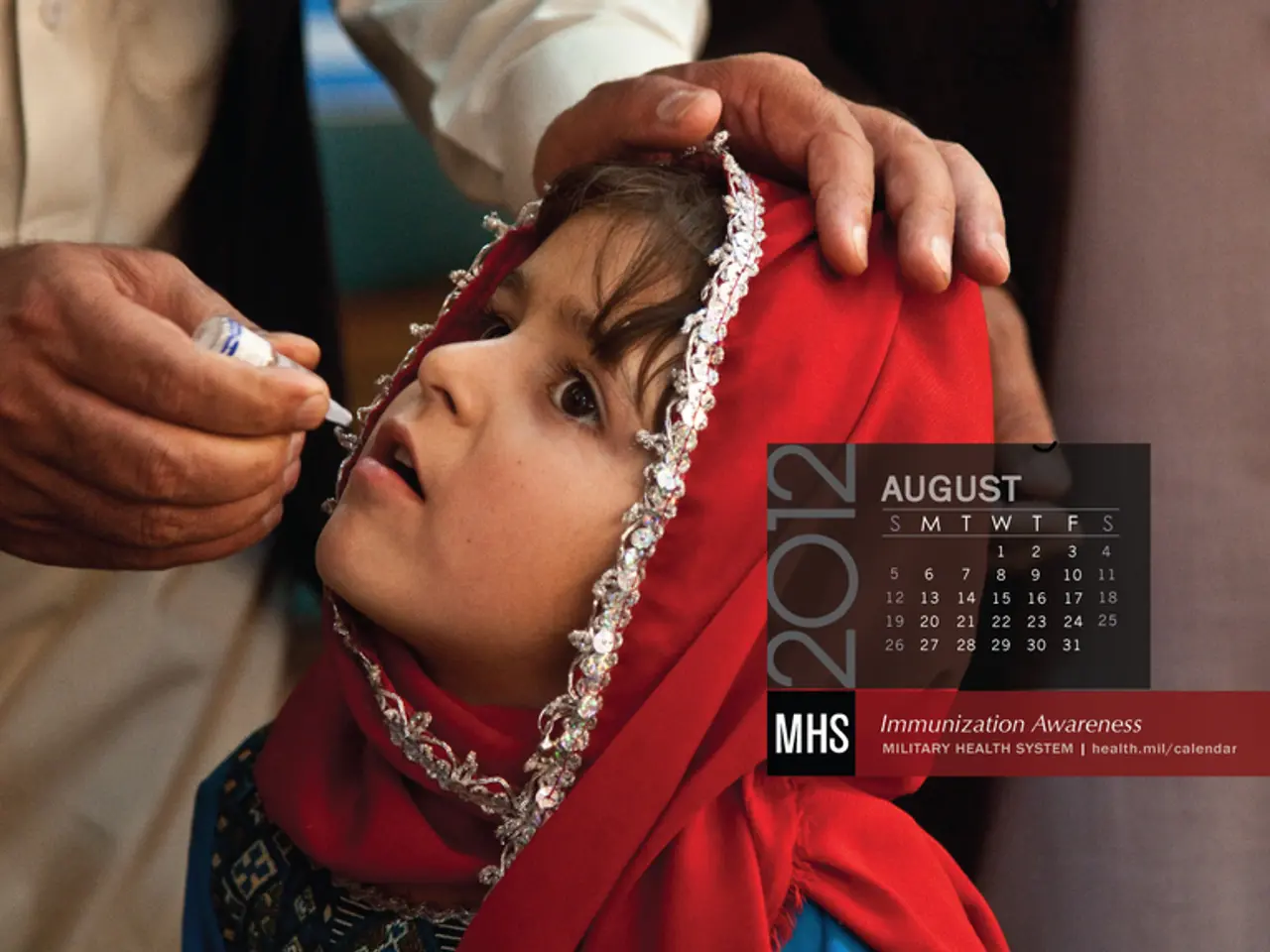Urgent collaboration required to curb Mpox transmission
In the face of the ongoing Mpox outbreak, Kenya has implemented a multi-faceted approach to prevent the spread of the virus. This strategy focuses on enhanced surveillance, public awareness, strengthening healthcare capacity, and vaccination efforts.
Enhanced Surveillance
Kenya has intensified community-level case detection and referral systems, supported by improved disease surveillance and laboratory capacity. This includes training healthcare workers and epidemiologists to detect cases early, trace contacts, and monitor the spread across affected counties. Collaboration with partners like the CDC and Médecins Sans Frontières (MSF) plays a crucial role in these efforts [1][4].
Public Awareness
MSF and local health authorities have integrated Mpox awareness into community activities, sensitizing key populations such as sex workers and training peer educators to recognize and refer Mpox cases. Community engagement also involves culturally sensitive messaging through trusted local networks to address fears and misinformation about Mpox and vaccination [1][3].
Strengthening Healthcare Capacity
Health systems in high-case counties like Mombasa are being supported through the establishment of isolation centers, enhanced infection prevention measures, clinical and human resource support, and nutritional support for patients. Training for healthcare workers on case management and infection control is ongoing [1][4].
Vaccination
Kenya’s Ministry of Health has received Mpox vaccines and is urged to deploy them rapidly in hotspots. MSF is ready to support vaccination campaigns to reduce transmission. Although there is public discussion fatigue due to multiple ongoing vaccination campaigns, efforts continue to vaccinate populations at risk, supported by rollout strategies informed by WHO and Africa CDC guidance. Over 900,000 people have been vaccinated in Africa generally, demonstrating scaled-up efforts [1][2][3].
The surge in Mpox cases necessitates a robust and multi-pronged prevention strategy. This includes enhanced surveillance and rapid response, continuous surveillance in border regions and high-incidence counties, active case finding, robust contact tracing, deployment of rapid response teams, and screening at points of entry.
As of July 31, 2025, Kenya has 314 confirmed Mpox infections across 22 counties. The counties with the highest number of cases include Mombasa (146), Busia (63), Nakuru (21), Kilifi (19), Nairobi (17), and Makueni (13) [5].
Dr Gathu, an Assistant Professor in the Department of Family Medicine at Aga Khan University Medical College and a consultant Family Physician at Aga Khan University Hospital Nairobi, emphasizes the importance of maintaining a coordinated multi-sectoral approach involving government, international partners, and communities to curb the Mpox outbreak effectively [5].
Key prevention measures include regular handwashing with soap and water, avoiding close contact with infected individuals, and ensuring adequate supplies of personal protective equipment for healthcare workers and diagnostic kits for laboratories. It is also crucial to ensure early and accurate detection, with the preferred laboratory test being the detection of viral DNA by Polymerase Chain Reaction [2].
The rash associated with Mpox can appear on various parts of the body and progresses through several stages. Symptoms of Mpox typically begin within three weeks of exposure and often start with flu-like symptoms [2]. Individuals are considered infectious from the onset of symptoms until all scabs have fallen off and a new layer of skin has formed, typically lasting 2-4 weeks [2].
A comprehensive public awareness, risk communication, and community engagement strategy is essential for Mpox. This involves disseminating accurate, clear, and culturally appropriate information about Mpox through various channels [5].
Healthcare Expansion
In addition to the current Mpox response, Kenya could bolster its healthcare system by addressing other medical-conditions, such as neurological-disorders and mental-health issues. By increasing funding for health-and-wellness facilities, the government can ensure that all citizens have access to essential medical services beyond infectious diseases.
Sexual Health Education
In the fight against Mpox, sexual-health education should also be prioritized. Alongside the ongoing awareness campaigns, information about safer sexual practices and sexually-transmitted infections (STIs) can help reduce the overall risk of transmission. Collaborating with local organizations and community leaders can help disseminate trustworthy sexual-health information to all citizens.
Migraine Research
Beyond the Mpox outbreak, scientific advancements can help address the unmet needs in other areas of public health. Investing in research on conditions like migraines can lead to improved diagnostics, treatment options, and ultimately, better overall health outcomes for millions of individuals.
Mental Health Support
Lastly, addressing the ongoing stigma surrounding mental-health issues is critical for fostering a healthy and thriving society. With enhanced support for mental-health services, individuals can have increased access to clinical care, resources, and educational materials, allowing them to lead healthier, happier lives.




